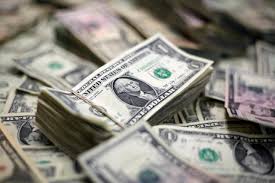Aussie slides as RBA opts for smaller hike; sterling marks new high

Australia’s dollar tumbled on Tuesday after the nation’s central bank surprised markets by opting to raise rates by a smaller-than-expected quarter point.
The Reserve Bank of Australia said it decided to slow the pace of tightening because the cash rate had been increased substantially in a short period of time, but left the door open to additional hikes.
The Aussie slumped as much as 0.97% before last trading 0.47% weaker at $0.6484.
“Obviously the RBA hasn’t been persuaded by what other central banks are doing, which does make the comment that they don’t have any concerns about the exchange rate down here,” said Ray Attrill, head of FX strategy at National Australia Bank in Sydney.
Heading into the RBA’s decision, the currency had been tracking a little below the top end of its range since Sept. 23 at $0.6537. It sank to a 2½-year low of $0.63635 last week.
Elsewhere, sterling was little changed at $1.13175 after earlier reaching $1.13435, the highest level since Sept. 22, the day before the new government roiled markets with its mini-budget of massive tax cuts funded by expanded borrowing.
British Prime Minister Liz Truss was forced to back down from the plan on Monday amid a party rebellion.
The euro also hovered close to the highest since Sept. 22, last changing hands 0.15% stronger at $0.9838.
The U.S. dollar lost some support from a slide in Treasury yields overnight after local economic data showed a slowdown in manufacturing, hinting that aggressive Federal Reserve rate hikes are already being felt.
The dollar index, which measures the currency against six peers including sterling and the euro, was about flat at 111.55, not far from Monday’s low of 111.46, a level last seen on Sept. 23. It had soared to a two-decade high of 114.78 last Wednesday.
On Monday, the Institute for Supply Management’s (ISM) survey showed U.S. manufacturing activity was the slowest in nearly 2½ years in September as new orders contracted, with a measure of inflation at the factory gate decelerating for a sixth consecutive month.
Commonwealth Bank of Australia, though, predicts sterling’s respite will be short-lived, and that the dollar rally has further to run.
Over the coming month, “USD can remain elevated as the FOMC (Federal Open Markets Committee) continues to hike aggressively and [the] global economy enters recession,” CBA strategist Joseph Capurso wrote in a client note.
He also noted “global recession risks can push GBP down significantly” and “the weak UK economic outlook will keep GBP under pressure” over the medium-term.
The greenback was 0.14% stronger at 144.77 yen, keeping below 145 after briefly popping above that level on Monday for the first time since Japanese authorities intervened to support their currency on Sept. 22.
Japanese finance minister Shunichi Suzuki repeated on Monday that authorities stand ready for “decisive” steps in the foreign exchange market if sharp and one-sided” yen moves persist.
New Zealand’s kiwi was little changed at $0.5716, still close to the top of its range since Sept. 26. The Reserve Bank of New Zealand decides policy on Wednesday, and the market is fully priced for a half-point bump, while giving 29% odds on a 75 basis-point increase.

